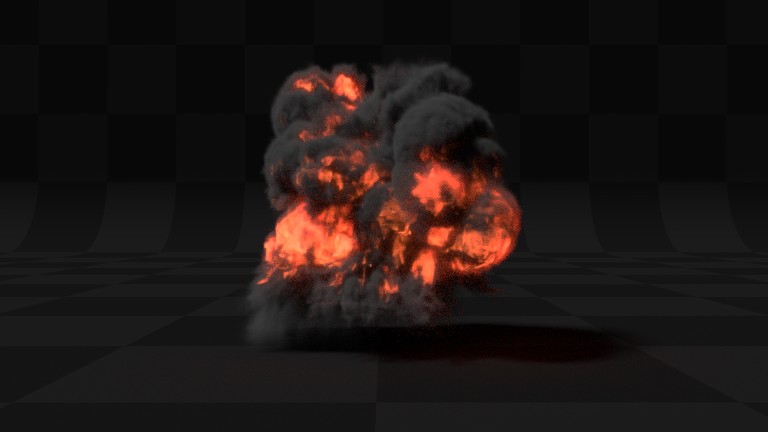Introdução¶
Smoke simulation is a subset of the fluids system, and can be used for simulating collections of airborne solids, liquid particulates and gases, such as those that make up smoke. It simulates the fluid movement of air and generates animated voxel textures representing the density, heat, and velocity of other fluids or suspended particles (e.g. smoke) which can be used for rendering.

Exemplo de simulação
Smoke and fire are emitted into a Domain from a mesh object or particle system. Smoke movement is controlled by airflow inside the domain, which can be influenced by smoke collision objects. Smoke will also be affected by the scene’s gravity and force fields. Airflow inside the domain can affect other physics simulations via the Smoke Flow force field.
Ciclo de trabalho¶
At least a Domain object and one Flow object are required to create a smoke simulation. A basic workflow looks like this:
- Criar um objeto e marcá-lo como Domínio que definirá as delimitações do volume da simulação.
- Definir um objeto e marcá-lo como Fluxo ou os objetos que irão emitir fogo e / ou fumaça.
- Set Collision objects to make the smoke interact with objects in the scene.
- Atribuir um Material volumétrico para o objeto de domínio.
- Salve o arquivo Blender.
- Gerar e gravar a simulação.
Nota
There is a Quick Smoke operator which will automatically create a domain object with a basic smoke/fire material. It can be found in , or with the operator search menu F3.
Nota
A simulação de fumaça do Blender foi criada com base no estudo chamado Wavelet Turbulence for Fluid Simulation e seus códigos associados.